We Tried Rivian R1T and R1S EVs' New Over-the-Air Update
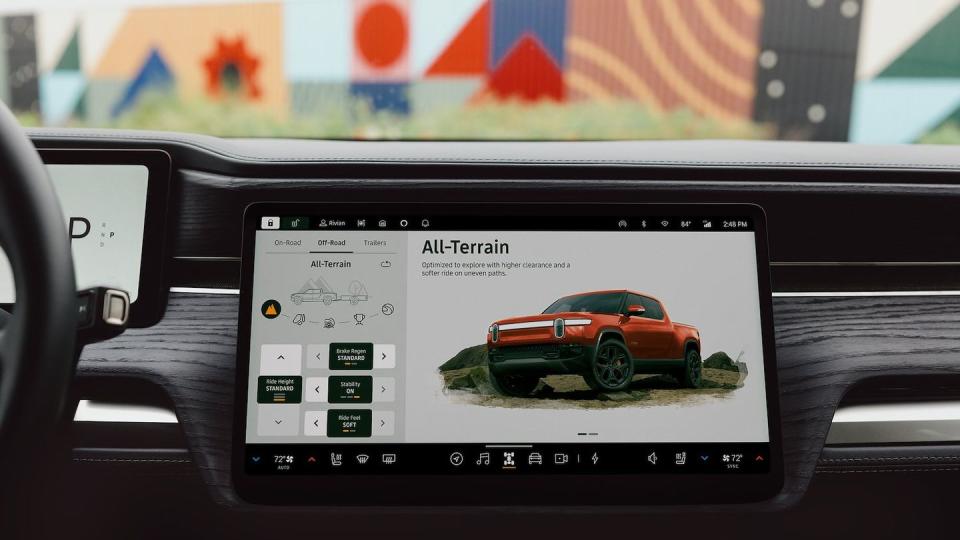
EV maker Rivian has rolled out an over-the-air update for its R1T pickup and R1S SUV that moves all drive-related settings close to the driver's right hand, regroups the drive modes, and makes room for a useful gauge page.
Towing is no longer a stand-alone mode but is now a Trailers function you can select from within most any on-road or off-road driving mode.
The vehicle now learns a trailer's weight and drag while towing to adjust the predicted range, and the driver can store these correction factors for up to three trailers.
A well-conceived interior made with logically arrayed buttons and knobs can be a frictionless way to interact with a car's systems, but a poorly designed hardscape can just as easily be an irksome source of frustration you're stuck with for as long as you own the car. Say what you will about the strengths and weaknesses of interacting with touchscreens, but they do hold a distinct advantage: iffy layouts and suboptimal menu flow can be corrected at any point, and the use of over-the-air updates means that existing owners benefit too.
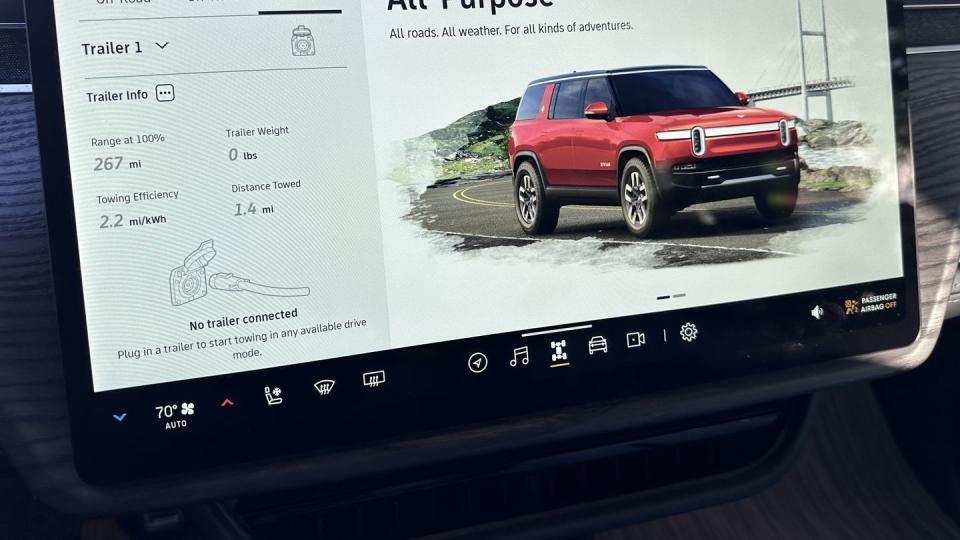
Such is the case with the 2023.38.0 update we just sampled in an R1S SUV. This new OTA update—which is available to all Rivian owners—doesn't just simplify the drive mode interface; it adds a whole new array of gauges and unlocks towing functionality that didn't previously exist. Such an approach works especially well in the Rivian because the easy stuff like headlights, wipers, and the gear selector are physical stalks of the sort that are hard to screw up, and they make Rivian products familiar and approachable. Improvements to the touchscreen and its logic only complement this basic goodness by making the touchscreen controls easy to use as well.
Cleaned-Up Drive Modes
Until now, a Rivian driver would select a drive mode using the expansive central touchscreen that was dominated by graphics that seemed to highlight themselves at the expense of usability. The drive modes themselves were close enough at hand, but the ride-height adjustment slider was far away on the passenger edge of the screen, while the regen, suspension, and traction control settings were scattered across the bottom. What's more, the on-road settings had priority, with the specific off-road choices hidden a layer down. Towing was a mode unto itself that was separate from any of the on- and off-road modes.
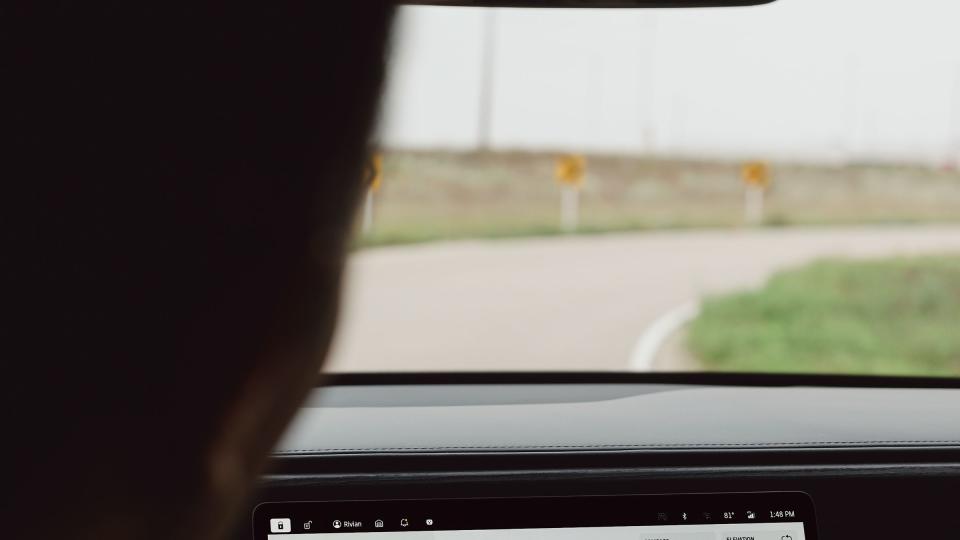
With this change, Rivian has created a dedicated space on the driver's-side third of the screen that is home to all drive-related functions when in the drive configuration mode: you still get full-screen maps and infotainment displays in those modes.
The top half of this new zone contains a new drive mode selection widget, with On-Road, Off-Road, and Trailers being the three top-level categories. On-Road opens the door to All-Purpose, Conserve, Sport, and Snow modes. Off-Road houses All-Terrain, Rock Crawl, Sand, Rally, and Drift modes. Trailers looks like a stand-alone third main category, but it's not. As the new name implies, when you select Trailers, you no longer get a discrete Tow mode that overrides the drive mode you've chosen, nor does it preclude you from choosing another.
Meanwhile, the bottom half of this newly created control zone is a permanent home for top-level adjustments such as suspension stiffness, brake regeneration, ride height, and stability control. The default settings for each and the range of selections available change with the drive mode you've selected, and it's all presented in a clear, understandable, and easy-to reach location close to the steering wheel rim.
What about the formerly dominant splashy graphics that illustrated the truck/SUV performing in your selected mode? They're still here, but they now occupy the right-hand two-thirds of the main screen. And if you'd rather look at something more useful than a picture of a Rivian, you now can.
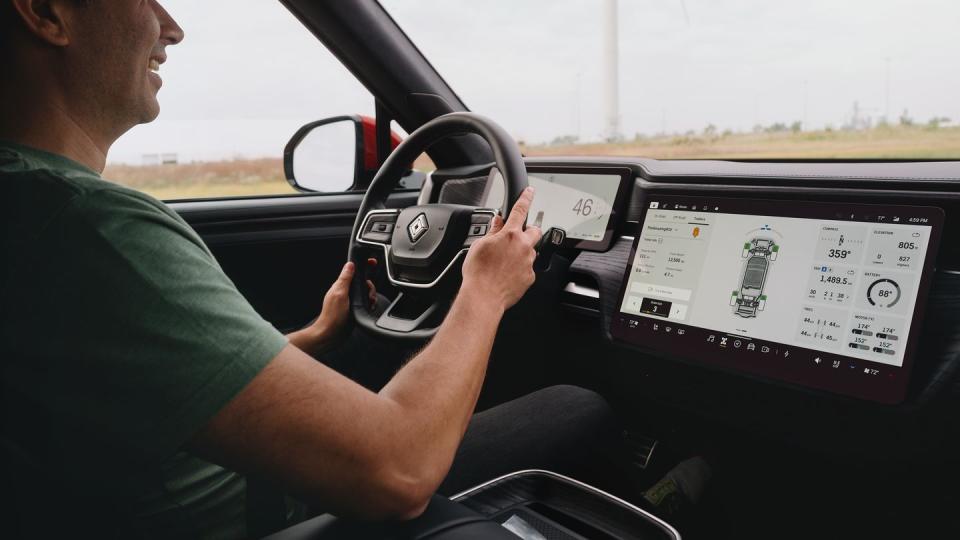
Swipe Left for the Gauge Page
The graphic image of the truck hasn't just shrunk by a third; it has also gained a pair of subtle rectangles that indicate it is now one of two pages. Swipe to the left to see an entirely new display to the right of the new Drive-mode region. The left half of this added screen is an overhead view of the powertrain, showing what's happening at each of the four contact patches, plus a graphic that shows the steering angle. The new right half has an array of six gauges, including a compass, altimeter, trip odometer, TPMS readout, and temperature gauges for the battery and the four motors (if your Rivian has four motors).
If you're in an off-road mode, the battery temp and odometer get swapped out for roll and pitch indicators. We like the additions but think something else needs to go so the trip odometer can stay. Dead reckoning using trail mileage is a staple of off-road guidebooks, and it's hard to point to electronic map substitutes because Rivian still doesn't support smartphone mirroring such as Apple CarPlay and Android Auto and the widely used off-road navigation apps that both of them support. Your smartphone will still be suction cupped to a window if you use those.
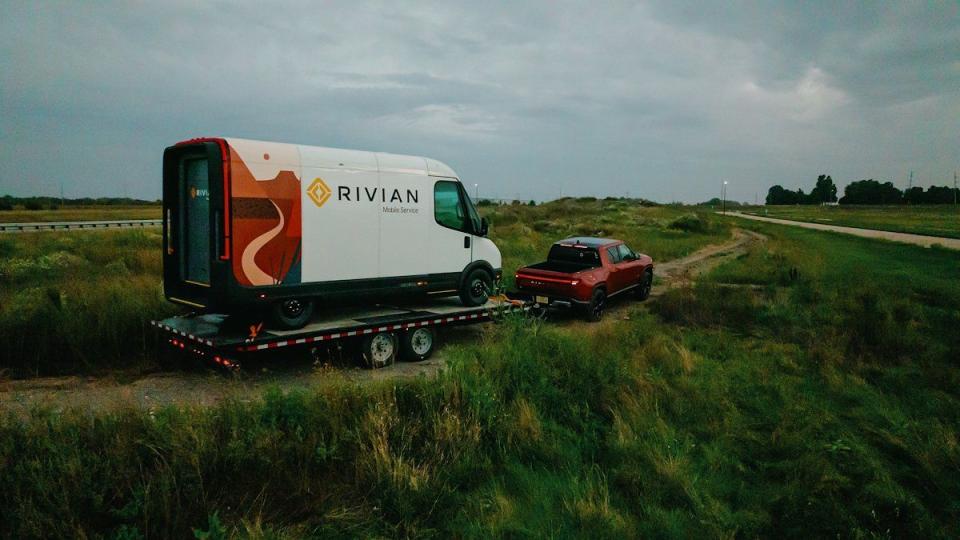
There’s a Lot More to Towing
As mentioned earlier, the Trailers page is no longer a path to a stand-alone towing mode. Instead, it's a window to a new towing interface that now co-exists with most other drive modes. Towing a trailer isn't something you do instead of, say, driving off-road; it's something you can do at the same time. Selecting Trailers while in an off-road mode will certainly affect the behavior of the traction control and corral your ride height choices, but it's no longer an either/or proposition; it's complementary. The Rally and Drift modes are excluded from this, for hopefully obvious reasons. Rock Crawl, on the other hand, is fair game if you're towing an adventure trailer with a quad-motor Rivian.
But the bigger get has to do with towing range, and how the truck more accurately calculates the available range while towing. In the first mile you tow a new trailer, the truck now learns the trailer's weight based on internal measurements of how acceleration and braking were affected. From this, a range correction factor is computed, and you can save this for later use by naming and saving your trailer in one of three available memory spots.
Why save a trailer if it only takes a mile to learn a trailer's weight? During longer trips, aerodynamic drag enters the frame, and the correction factor gets further refined, making any range prediction more accurate. Saving your trailer both shortcuts this process for the next trip and also saves your electronic trailer brake gain setting.
Beyond this, the other new towing feature has to do with the camera system, which now enables the R1T's rear-facing bed camera to be available when moving forward with a trailer attached. This doesn't apply to the R1S SUV, because its rear camera is too far aft to be of any use seeing around the trailer.
It Boils Down to an Electronic Facelift
There's a lot to like about this new interface, both in terms of newly added features and the greatly improved simplicity and ease of use that makes what is essentially the same touchscreen interface far less distracting. Rivian's engineering team has done much to put oft-used drive mode controls near the driver's fingertips. We love the new gauge page too, but we do see room for improvement. Some of them are a bit out of the driver's eye line, and we think the trip odometer is more important off-road than the designers imagined. It'd be nice if an owner could nominate any of them for temporary residency on the instrument panel, too.
But that's picking nits, and it's overlooking the larger point. This profound change is the kind of thing you could only hope for in most vehicles when facelift time comes around and probably wouldn't see until the next full model change. In either case, the current owners who complained about the gaffes in surveys and got the ball rolling wouldn't benefit unless they traded in for the new model. That's not the case here, because everyone benefits when an OTA is involved.
Any minor beefs with 2023.38.0 that may arise can be corrected in future updates, and it lays the groundwork for future tweaks. We can imagine trailer tongue weight sensing as a possibility, for example. And just think how much more we'd like the R1S and R1T if they added Apple CarPlay and Android Auto. Thing is, they still can.
You Might Also Like

 Yahoo Autos
Yahoo Autos 